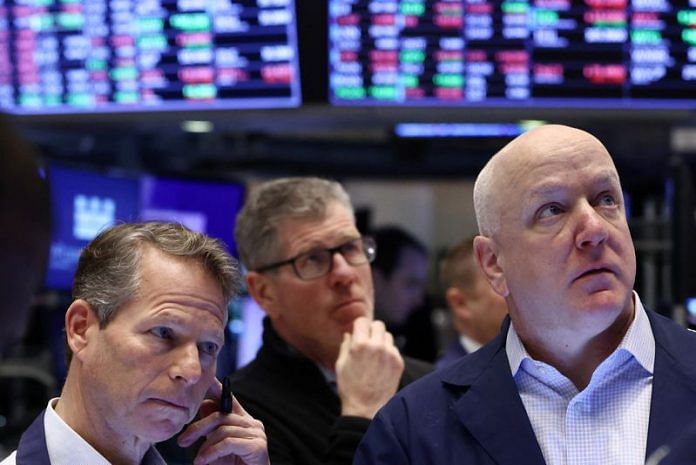By Sinéad Carew
(Reuters) – Equity indexes rose while the dollar index fell on Tuesday after data showed that U.S. inflation slowed in January, but still rose faster than expected, raising questions about when the Federal Reserve can pause policy tightening.
MSCI’s all country index jumped to a session high right after the report came out, before retreating sharply and then rebounding again after the U.S. market open. The S&P 500 benchmark started the session sharply lower, but rebounded strongly soon after the open.
After struggling to find direction after the report, U.S. Treasury yields soon increased and stayed above Monday’s closing levels.
The dollar index was also lower in volatile trading.
The consumer price index increased 6.4% in the 12 months through January, marking its smallest annual rise since late 2021 but faster than the 6.2% economists had expected.
Month-on-month, consumer prices rose 0.5% in January, after gaining 0.1% in December, the Labor Department said on Tuesday.
“The topline and core were higher than consensus but year-over-year both core and topline are still headed lower – just less than expected. It still indicates that overall inflation is moving down,” said Peter Cardillo, chief market economist at Spartan Capital Securities, New York.
While some investors had harbored hopes that the Fed might pause rate hikes after the next meeting, the inflation reading implied otherwise.
“I don’t think (this report) moves the needle for the Fed, and I suspect they’re taking a hard look at the data. Does it mean we are headed for at least two more rate hikes? Absolutely. My guess is the year-over-year decline in topline and core (CPI) suggests another 25 basis point hike in March and another one in May,” said Cardillo.
Futures tied to the Fed’s policy rate showed bets that the U.S. central bank will raise interest rates at least two more times, with contract pricing showing traders betting heavily on a quarter of a percentage point rate hike in both March and May.
The Dow Jones Industrial Average rose 56.11 points, or 0.16%, to 34,302.04, the S&P 500 gained 18.22 points, or 0.44%, to 4,155.51 and the Nasdaq Composite added 89.25 points, or 0.75%, to 11,981.04.
The pan-European STOXX 600 index rose 0.60% and MSCI’s gauge of stocks across the globe gained 0.58%. Emerging market stocks rose 0.28%.
In currencies, the dollar index, which measures the greenback against a basket of major currencies, fell 0.262%, with the euro up 0.39% to $1.0762.
The Japanese yen weakened 0.08% versus the greenback at 132.50 per dollar, while Sterling was last trading at $1.2214, up 0.65% on the day.
In Treasuries, benchmark 10-year notes were up 0.7 basis points to 3.726%, from 3.719% late on Monday. The 30-year bond was last down 2.5 basis points to yield 3.7674%, from 3.792%. The two-year note was last up 5 basis points to yield 4.5836%, from 4.534%.
Oil prices fell after the U.S. government said it would release more crude from its Strategic Petroleum Reserve and edged down further after U.S. inflation data.
U.S. crude recently fell 1.17% to $79.20 per barrel and Brent was at $85.73, down 1.02% on the day.
Spot gold added 0.6% to $1,865.34 an ounce. U.S. gold futures fell 0.31% to $1,846.20 an ounce.
(Reporting by Sinéad Carew, Stephen Culp, Stella Qiu, Susan Mathew and Amanda Cooper; Editing by Sam Holmes, Sharon Singleton, Chizu Nomiyama and Christina Fincher)
Disclaimer: This report is auto generated from the Reuters news service. ThePrint holds no responsibilty for its content.



